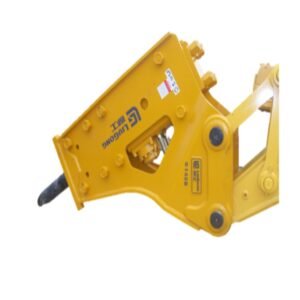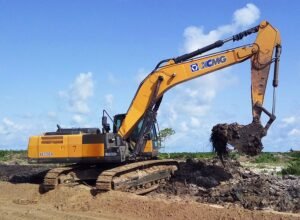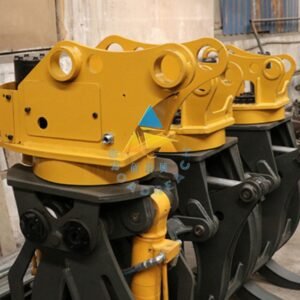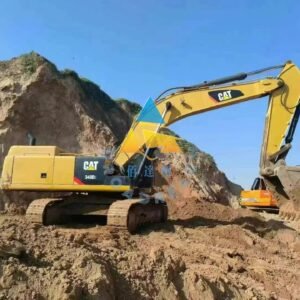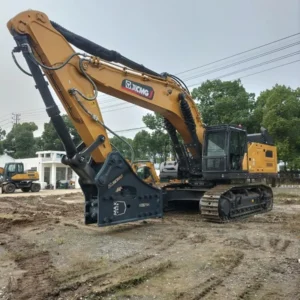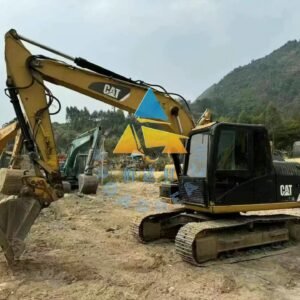BroadReach Construction Machinery Co., Ltd

How to Assess the Condition and Value of a Used Excavator: A Friendly Guide
Buying a used excavator can be a great way to save money, but it’s important to make sure you’re getting a good deal. Whether you’re a construction contractor, a landscaper, or just someone looking to add a machine to your fleet, assessing the condition and value of a used excavator is essential before making a purchase.
In this article, we’ll guide you through the key steps to assess a used excavator, helping you make an informed decision. From checking the machine’s physical condition to evaluating its performance, we’ve got you covered!
1. Start with the Machine’s History
Before diving into the nuts and bolts of the excavator itself, it’s a good idea to gather as much information as possible about its history. A machine’s past can tell you a lot about its potential future performance.
What to Look For:
- Service History: Ask the seller for records of maintenance and repairs. Regular servicing is a good sign that the excavator has been well taken care of.
- Ownership History: Ideally, the machine should have had only a few previous owners. A long history of multiple owners could indicate that the machine has been problematic or that it was frequently sold off.
- Work History: Find out what kind of work the excavator has been used for. Machines that have been used for heavy digging in harsh conditions might have more wear and tear than those used for lighter tasks.
2. Check the Hour Meter
The hour meter on an excavator is similar to the odometer on a car. It tells you how much time the machine has been used. Hours of operation can give you a good idea of how much wear and tear the machine has experienced.
What to Look For:
- Average Hours: Excavators typically last between 10,000 and 20,000 hours, depending on maintenance. Machines with fewer hours are generally more valuable.
- Overhauled Engines: If the excavator has over 5,000 hours on it, check if the engine or any major components have been overhauled or replaced. This can extend the machine’s life significantly.
3. Inspect the Engine and Hydraulic System
The heart of any excavator is its engine and hydraulic system. These components are costly to replace or repair, so it’s important to make sure they’re in good condition.
What to Look For:
- Engine Condition: Start the engine and listen for any unusual noises like knocking or rough idling. Check for any leaks around the engine and look for smoke or excessive exhaust.
- Hydraulic System: The hydraulics are responsible for the excavator’s lifting, digging, and swinging functions. Inspect hydraulic lines for leaks and check the fluid levels. The hydraulics should operate smoothly, with no jerking or delayed movement.
- Oil and Fluids: Check the engine oil, hydraulic fluid, and coolant. Dirty oil or low fluid levels can indicate neglect or potential issues.
4. Examine the Undercarriage
The undercarriage, including the tracks and rollers, is one of the most expensive parts of an excavator to repair or replace. Pay close attention to its condition, as it directly impacts the machine’s performance and maintenance costs.
What to Look For:
- Track Wear: Inspect the tracks for wear, cracks, or damage. Tracks should have sufficient tread, and there should be no significant signs of rust or misalignment.
- Track Tension: Tracks should be properly tensioned. If the tracks are too loose or too tight, it could indicate poor maintenance or an issue with the tensioning system.
- Rollers and Sprockets: Check the rollers and sprockets for any signs of excessive wear or damage. Worn rollers or sprockets will lead to uneven wear on the tracks and poor machine performance.
5. Inspect the Boom, Arm, and Bucket
The boom, arm, and bucket are the key components for digging and lifting. Any damage or excessive wear on these parts can impact the excavator’s performance.
What to Look For:
- Cracks or Welds: Inspect the boom, arm, and bucket for any signs of cracks, welds, or repairs. Heavy-duty use can lead to structural damage, which might require expensive repairs.
- Bucket Condition: Check the bucket for wear and tear, particularly the teeth and cutting edges. A worn-out bucket may need to be replaced soon, which can add to the cost of the machine.
- Hydraulic Cylinders: Inspect the hydraulic cylinders on the boom and arm for leaks. Smooth, clean cylinders are a sign of proper maintenance.
6. Test the Excavator’s Performance
A test run is one of the most important steps in evaluating a used excavator. You’ll want to see how it performs in real-world conditions.
What to Look For:
- Smooth Operation: When you operate the machine, pay attention to how it moves. The engine should run smoothly, and the hydraulic functions (lifting, digging, swinging) should work without hesitation.
- Steering and Swinging: Check the steering mechanism and the excavator’s ability to swing. It should respond promptly and without any unusual noises or jerks.
- Hydraulic Power: Test the hydraulic functions by lifting a load, extending the arm, or digging into the ground. The excavator should handle these tasks with power and precision.
7. Check the Exterior and Cab Condition
Don’t overlook the condition of the exterior and the cab. While it may not affect performance directly, a well-maintained exterior and cab are signs of a well-cared-for machine.
What to Look For:
- Cab Interior: Check the seat, controls, and instrumentation inside the cab. Ensure that the controls are functional, and there are no broken switches or gauges.
- Exterior Condition: Inspect the body panels for dents, rust, or signs of a poor repair job. A machine with a lot of visible damage may indicate that it’s been through some rough use.
- Lights and Electricals: Test all the lights, indicators, and electrical systems. Non-functioning lights or wiring problems could point to bigger electrical issues.
8. Get a Professional Inspection
If you’re not sure about your ability to evaluate the excavator on your own, it’s worth hiring a professional to conduct a thorough inspection. A mechanic or equipment expert can identify issues that you may not notice, and they can provide a more accurate assessment of the machine’s condition.
9. Determine the Market Value
Once you’ve assessed the machine’s condition, it’s time to determine its value. Here are a few factors that can help:
- Age and Hours: As a general rule, the newer and less used the machine, the higher the price.
- Condition: The better the condition, the more valuable the machine is. Significant wear and tear can lower the price.
- Brand and Model: Popular brands like Caterpillar, Komatsu, and Volvo often hold their value better than less-known brands.
- Market Prices: Research similar machines in your area or online to get a sense of what similar excavators are selling for.
Conclusion
Buying a used excavator can be a smart investment if you take the time to assess its condition carefully. By checking the machine’s history, inspecting key components, and testing its performance, you can ensure that you’re making a wise purchase. Whether you’re looking for a machine that will serve you for years to come or just need a short-term solution, a thorough evaluation will help you get the best value for your money.
Good luck with your excavator search, and remember—don’t rush the process. Take your time to inspect, test, and research, and you’ll find the right machine for your needs!

